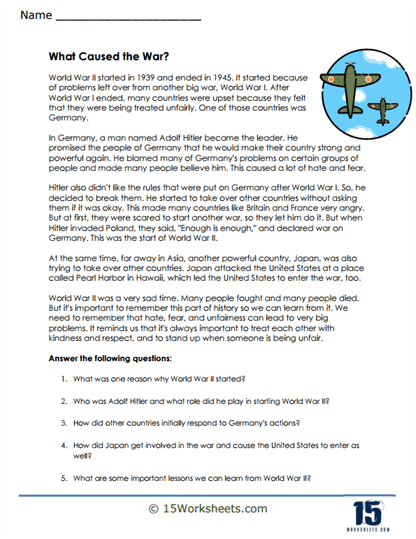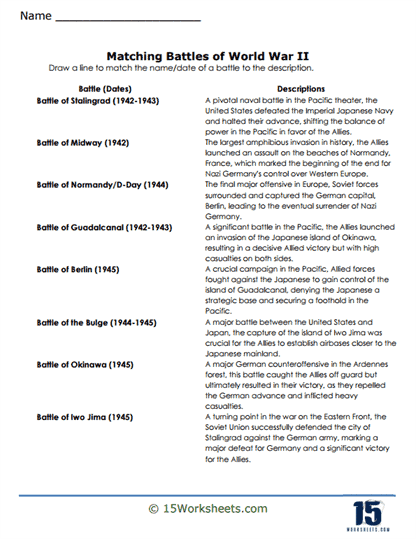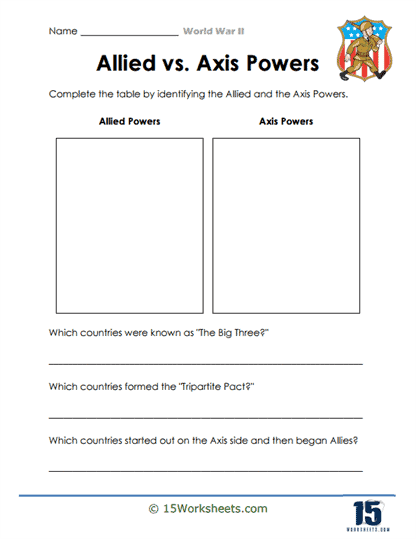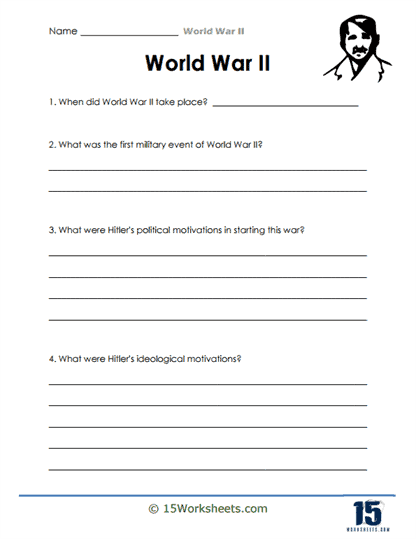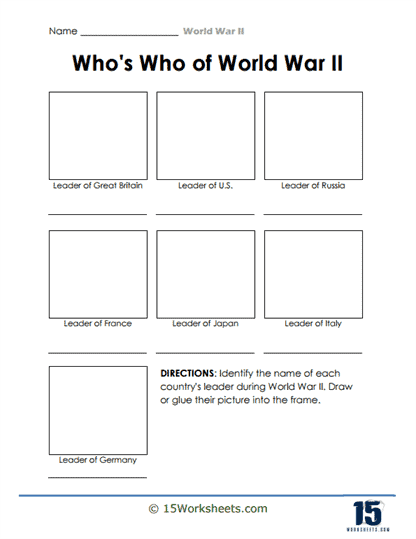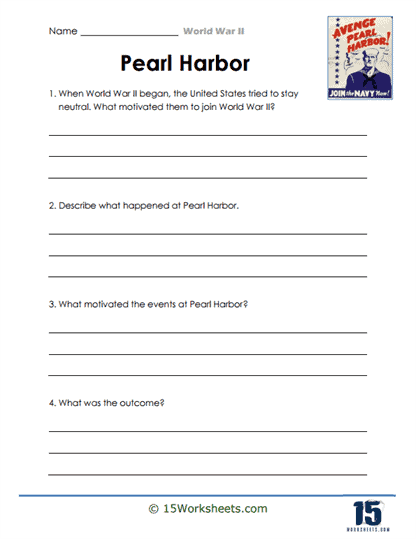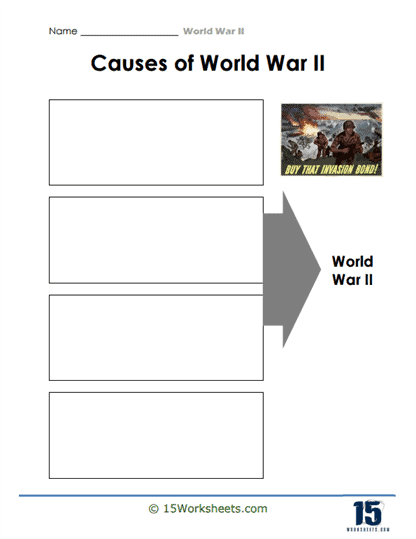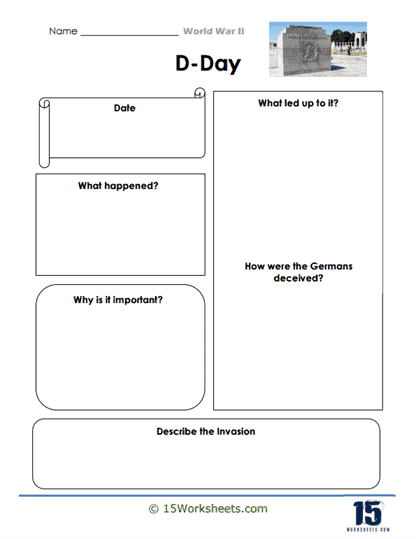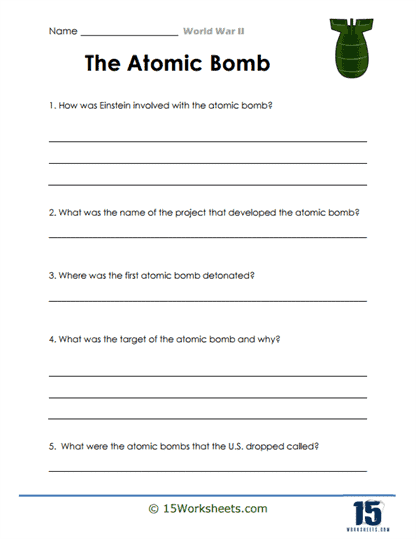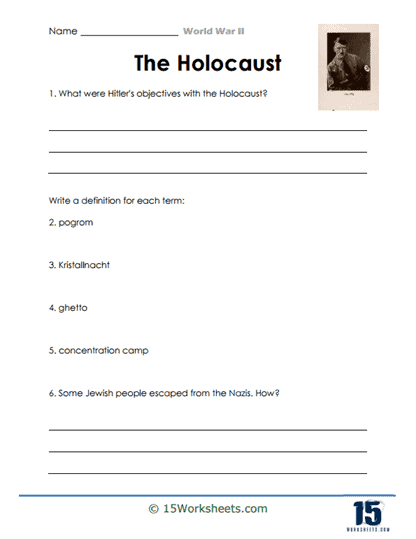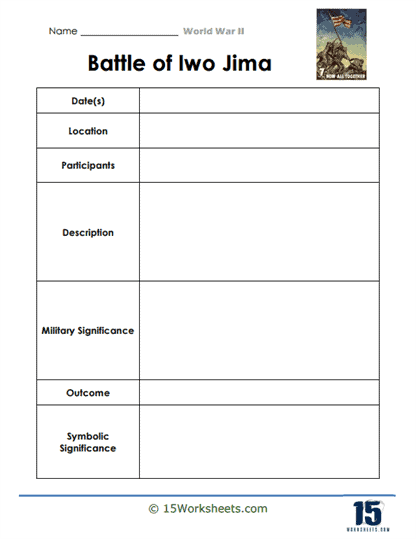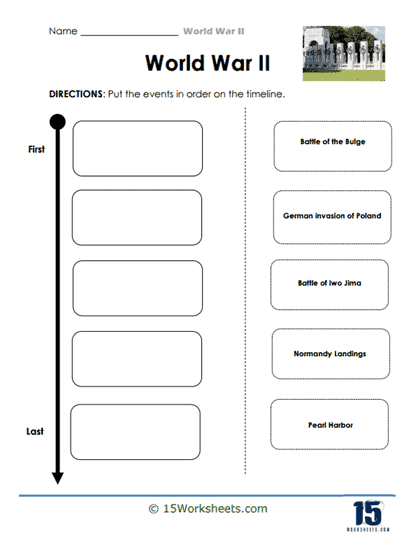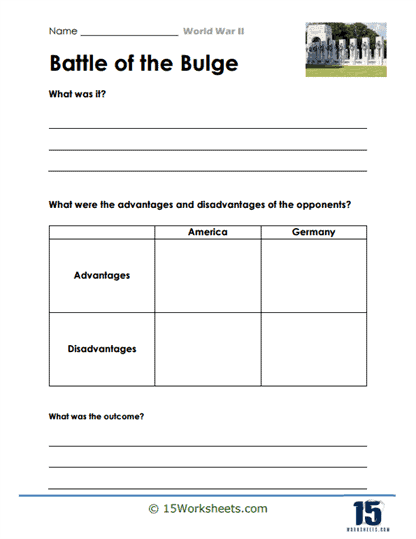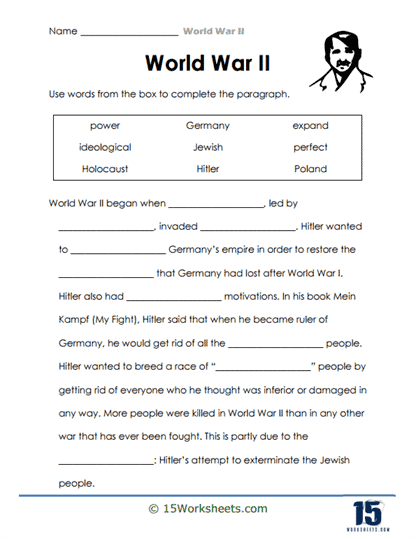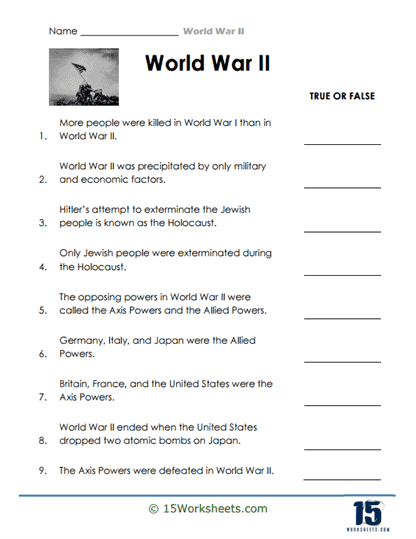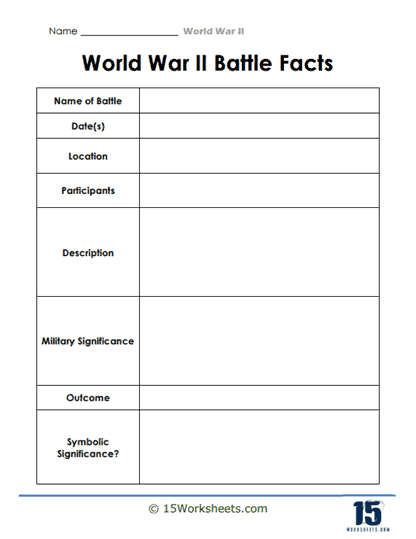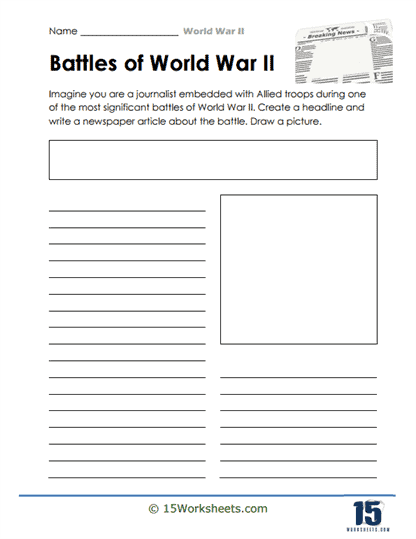World War 2 Worksheets
About These 15 Worksheets
This collection of worksheets on World War II is a valuable educational resource that provides students with a comprehensive understanding of one of the most significant events in modern history. By delving into the intricacies of the Second World War, students can gain insight into the causes, consequences, and key events of this global conflict. Studying World War II not only fosters historical awareness but also encourages critical thinking, as students analyze the political, social, and economic factors that shaped the course of the war.
This series equips students with valuable research and analytical skills, preparing them to engage thoughtfully with complex historical narratives and contribute to a more informed and enlightened society.
These worksheets cover a broad range of topics related to the war, including key events, figures, countries involved, causes and consequences, and other aspects. These worksheets aim to deepen students’ understanding of this historical period by asking them to engage with the material actively. They could include reading passages, question and answer sections, fill-in-the-blank exercises, timeline activities, map labeling, and more.
Types of Exercises on World War II Worksheets
Reading Comprehension – These exercises often involve a short passage about a specific topic related to World War II. After reading, students answer questions to demonstrate their understanding of the text. The passage might be about a major event like the bombing of Pearl Harbor, the Holocaust, or D-Day. Or it could focus on important figures such as Winston Churchill, Franklin Roosevelt, or Adolf Hitler.
Fill-in-the-Blank – These exercises help students recall facts and details about World War II. A sentence or paragraph will be given with certain words omitted, and students need to fill in the blanks. This could include key vocabulary terms, names of people or places, or significant dates.
Timeline Activities – These exercises help students understand the sequence of events during World War II. They might be asked to put key events in order, or to match dates with events. This helps to develop a clear chronology of the war in students’ minds.
Map Labeling – Maps can be used to understand the geographical context of the war. Students could be asked to label countries, major cities, battle locations, or territories occupied by different countries. This helps students visualize where key events took place.
Multiple Choice and True/False Questions – These questions test students’ general knowledge about the war. They can cover any topic related to World War II, from causes and effects to specific battles to life on the home front.
Short Answer and Essay Questions – These questions require more in-depth responses. Students might be asked to explain the causes of World War II, discuss the effects of the war, or analyze the decisions made by key figures. This encourages critical thinking and allows students to express their understanding in their own words.
Crosswords or Word Searches – These can be a fun way to review vocabulary and key terms related to World War II.
The History and Facts
World War II, which took place from 1939 to 1945, was the deadliest conflict in human history. It started when Germany, under the rule of Adolf Hitler and his Nazi Party, invaded Poland. This act of aggression was a direct violation of the Treaty of Versailles, a peace treaty that ended World War I and placed responsibility and severe penalties on Germany. Hitler’s actions and his clear disregard for the treaty, coupled with his earlier annexation of Austria and the Sudetenland region of Czechoslovakia, finally led Britain and France to declare war on Germany.
Over the next six years, the conflict spread around the globe, drawing in over 30 countries and affecting millions of people. Major players on one side, known as the Axis Powers, included Germany, Italy, and Japan. On the other side were the Allies, primarily the Soviet Union, the United States, the United Kingdom, and China.
World War II was marked by numerous significant events, including the Holocaust, in which six million Jews were systematically murdered by the Nazis; the bombing of Pearl Harbor by Japan, which led the United States to enter the war; the Battle of Stalingrad, one of the deadliest battles in history and a turning point in the war; and the D-Day invasion, where Allied forces landed on the beaches of Normandy in France, marking the beginning of the end for the Axis Powers.
The war finally ended in 1945, first with Germany’s unconditional surrender after Hitler’s suicide and then with Japan’s surrender after the U.S. dropped atomic bombs on the cities of Hiroshima and Nagasaki. The effects of the war were profound and long-lasting, leading to the Cold War and permanently shifting the balance of power in the world.

